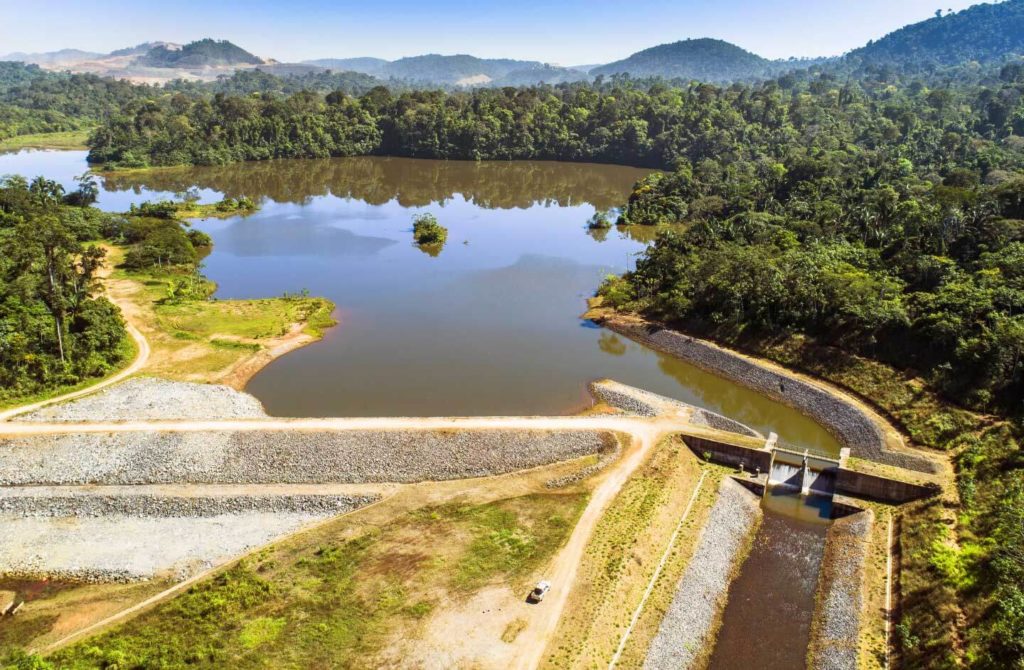Vale is starting activities with unmanned equipment for the removal of tailings from B3/B4 dam, at Mar Azul iron ore mine, in Nova Lima, and Sul Superior dam, at Gongo Soco mine, in Barão de Cocais – both in Minas Gerais. Actions were assessed and approved by the Public Prosecutor’s technical auditor, in addition to the entire body of external consultants hired by the company to prepare the projects, and represent the progress of the company’s De–characterization Program and the commitment to an approach fully focused on the safety of people and structures.
The company states: “It is important to inform that the de-characterisation of these dams, which are currently at emergency level 3 of the Emergency Action Plans for Mining Dams (PAEBM), is a complex process. Aware that any intervention may increase risks, the company has already carried out several preventive actions, including the removal of all residents from the respective Self–Rescue Zones (ZAS) and the construction of back–up dams (downstream containment structures) in both territories.”
At the Sul Superior dam, the removal will begin with the collection of samples, which aims to increase knowledge on the characteristics of the material disposed in the reservoir, to improve safety and the techniques that will be used in the de–characterisation process, in addition to subsidising studies to define vibration control levels. Channels will also be opened to improve the flow of water from the structure, preventing accumulation in the reservoir, especially during the rainy season.
At the B3/B4 dam, the tailings removal will be performed together with the completion of the partial removal of a waste pile present at the site, from which 350,000 cubic metres of material have already been removed since November 2020. “It should be noted that all activities performed and planned for the two dams will be fully executed with unmanned equipment, operated remotely and safely from a control centre outside the structures. All actions were communicated to the technical audit of the Public Prosecutor’s Office of Minas Gerais and the competent bodies.”
In view of the complexity and risks of the de–characterisation process of these structures, Vale informs that it has strict control over all the actions implemented with the objective of ensuring the safety of workers and people living in nearby communities. In addition, Vale is also studying additional measures to minimise any residual impacts on water bodies downstream of the back–up dams. The back–up dams built downstream of the two dams are complete and have the capacity to contain the tailings if needed. The structure that serves Sul Superior dam is 36 m high and 330 metres long. The structure that serves B3/B4 dam is 33 m high and 221 m long.
Vale adds: “The works followed the strictest Brazilian standards, the best engineering practices and technical references from international entities used for similar constructions. Specialist companies, independent from the designer and the builder, assessed and certified that the back–up dams are stable and, therefore, provide safety to the communities downstream. The technical auditor of the Public Prosecutor’s Office of Minas Gerais also ratified the stability of the back–up dams. Still as part of risk control, the dams continue to be permanently monitored by the Geotechnical Monitoring Center (CMG). If necessary, the activities will be suspended for appropriate evaluations. The actions follow all the precautions and measures for prevention to COVID-19.”
Since 2019, five of Vale’s structures have been completely de–characterised and reintegrated into the environment. The first was 8B dam, at the Águas Claras mine, in Nova Lima (MG), still in 2019, followed by three structures in the State of Pará. The de–characterisation of Dique Rio do Peixe, in Itabira (MG), is also complete, and the next one to be completely de–characterised will be Fernandinho dam, also in Nova Lima (MG). Vale’s De–characterization Program for upstream dams is based on technical information and studies and considers the specificity of each of the 30 geotechnical structures, comprising 16 dams, 12 dikes and 2 drained piles.
The de–characterisation of upstream dams is a legal obligation of all mining companies in Brazil and Vale says, committed to all, it has “executed all activities with the monitoring and support of external consultants, authorities and technical auditors of the authorities, always with the premise of safety of people and the environment. Each project, without distinction, is technically reviewed by more than one specialist, including the Public Prosecutor’s technical auditor.”











